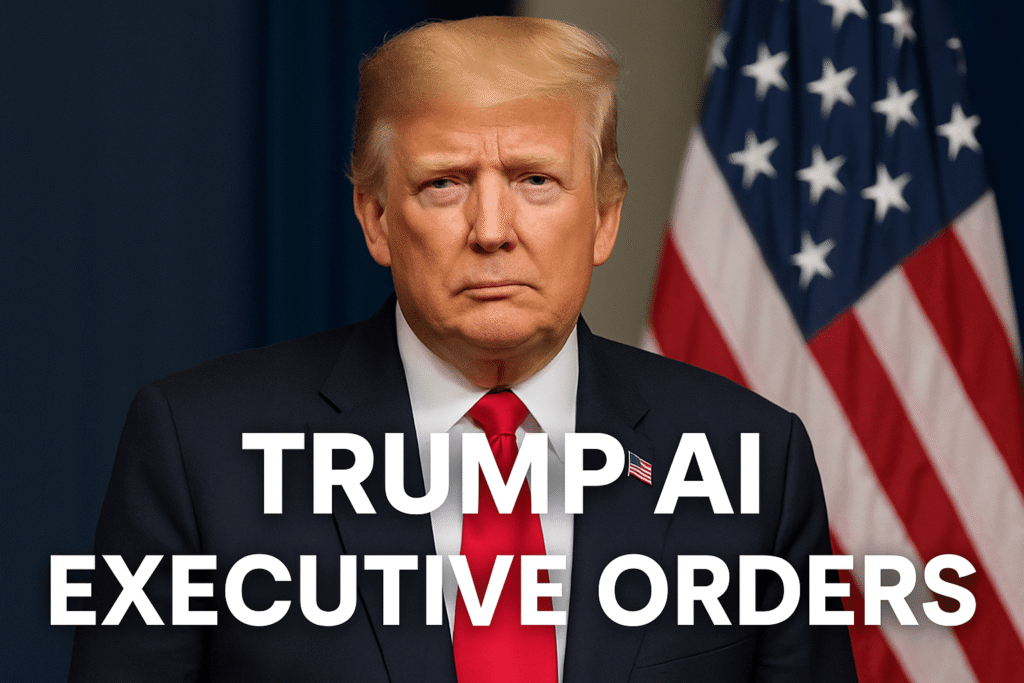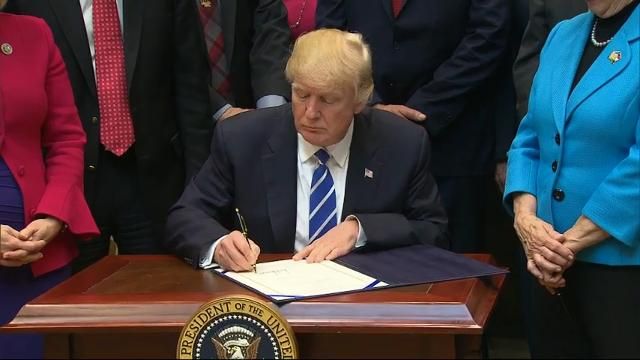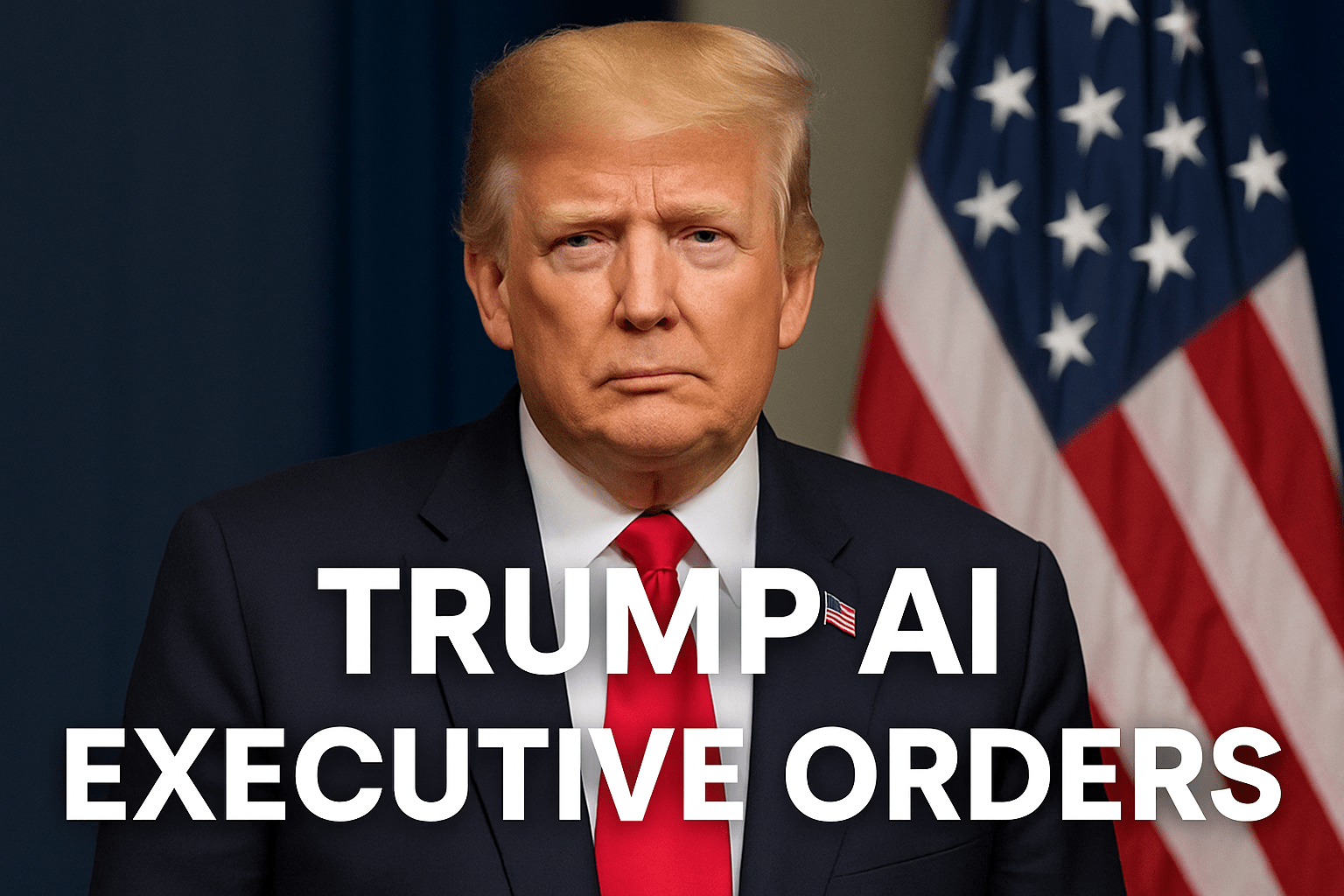
In a bold and sweeping move, former President Donald Trump has declared what he calls an AI Emergency, unveiling a trio of Trump AI Executive Orders designed to reshape America’s artificial intelligence future. The announcement, made over two high-profile days, sets the tone for what many analysts describe as a transformative shift in U.S. AI policy, blending national security, infrastructure overhaul, and political ideology.
With the rollout of the Winning the AI Race plan, Trump has reignited the tech policy debate and positioned the U.S. in a renewed global AI arms race this time with the full force of federal deregulation, aggressive infrastructure reform, and an ideological stand against what he terms “woke AI.”
A New Era of AI Politics
The Trump AI Executive Orders mark a defining moment in the political battle over artificial intelligence. By declaring an AI Emergency, Trump asserts that current federal policies are stifling innovation, compromising U.S. national interests, and allowing ideological bias to infiltrate critical systems.
Among the most controversial elements is a federal ban on the use of “ideologically biased” AI models in government contracts. Trump specifically referenced OpenAI’s ChatGPT and Google’s Gemini, accusing them of promoting left-leaning narratives and DEI (diversity, equity, inclusion) programming.
This move aligns with the broader Trump AI policy 2025, which seeks to eliminate perceived political influences in federal tech procurement and create what the former president calls “neutral, pro-American AI systems.”
Deregulation and Infrastructure Acceleration
The second of the Trump AI Executive Orders focuses on AI infrastructure reform in the USA, cutting through what Trump calls “bureaucratic bottlenecks.” The executive order expedites the construction of data centers by bypassing NEPA (National Environmental Policy Act) reviews and relaxing environmental and diversity-related stipulations.
The order also emphasizes energy expansion, with federal lands being opened up for AI-related development. Trump characterized this as an “all-out push for AI and energy dominance.”
This infrastructure acceleration is a centerpiece of the Winning the AI Race plan, which lays out over 90 policy initiatives across three main pillars:
- Accelerating Innovation – Removing federal red tape and strengthening public-private collaboration.
- Building American AI Infrastructure – Fast-tracking permits, data centers, and power grids.
- International Leadership & Security – Exporting U.S. AI technologies and countering China’s Digital Silk Road.
A Global Tech Race
Perhaps the most geopolitically charged aspect of the Trump AI Executive Orders is the promotion of full-scale AI exportation. Trump’s administration plans to allow U.S. companies to send complete AI stacks hardware, software, and models to allies, while reviewing and potentially loosening some Biden-era export restrictions to China.
This change highlights a key difference in the current Trump vs. Biden AI policy. Where Biden focused on risk mitigation and global AI regulation, Trump is prioritizing dominance, competition, and rapid expansion, even if it means accepting higher levels of technological risk.
According to Trump’s team, this plan will establish American dominance in global tech governance by outpacing China on both an ideological and economic level.
Mixed Reactions from Industry and Policy Circles
Industry reactions to the Trump AI Executive Orders have been mixed but largely optimistic among U.S. tech giants. Nvidia CEO Jensen Huang called the infrastructure focus “game-changing,” particularly as companies scramble to build next-gen AI training facilities.
However, civil liberties groups and digital rights organizations raised serious concerns. Critics argue that the ideological litmus test for AI systems may infringe on free speech and could politicize technology development.
Analysts from the Council on Foreign Relations warned that the AI Emergency declared by Trump prioritizes speed over safety, possibly sidelining critical issues like bias mitigation, fairness, and cyber resilience.
Energy experts have also sounded alarms. With the push to rapidly expand data centers, many warn that the U.S. electrical grid may be strained, especially if fossil fuels are heavily relied upon to support AI growth.
Trump’s Broader Tech Legacy: Trump AI Executive Orders

The announcement of the Trump AI Executive Orders also revives talk of Trump’s earlier tech ambitions. The Winning the AI Race plan is being positioned as a successor to the former president’s Stargate initiative a $500 billion public-private AI venture involving Oracle, SoftBank, and OpenAI during his first term.
Supporters view this as a continuation of Trump’s longstanding vision to turn the U.S. into the global epicenter of AI development. Opponents see it as an overreach that sacrifices ethics and accountability in favor of rapid industrial growth.
An Inflection Point for AI Governance
Regardless of political affiliation, it’s clear that the Trump AI Executive Orders will have lasting implications for how the U.S. governs artificial intelligence. The declaration of an AI Emergency has launched a new chapter in the global AI race one that is being shaped by political will as much as technological capacity.
With the Winning the AI Race plan now in motion, America faces a defining test: can it lead the world in AI innovation while maintaining ethical standards and democratic values?







